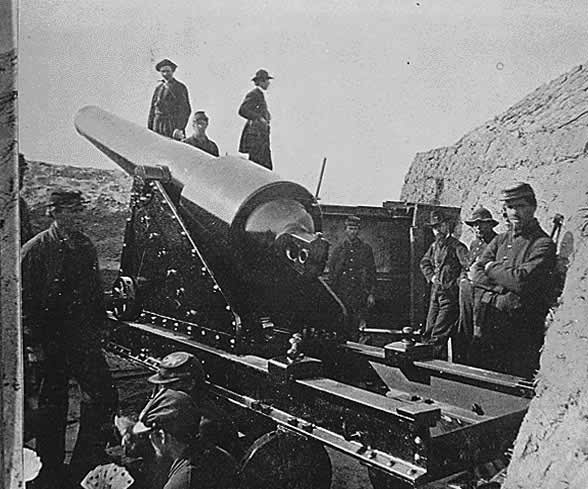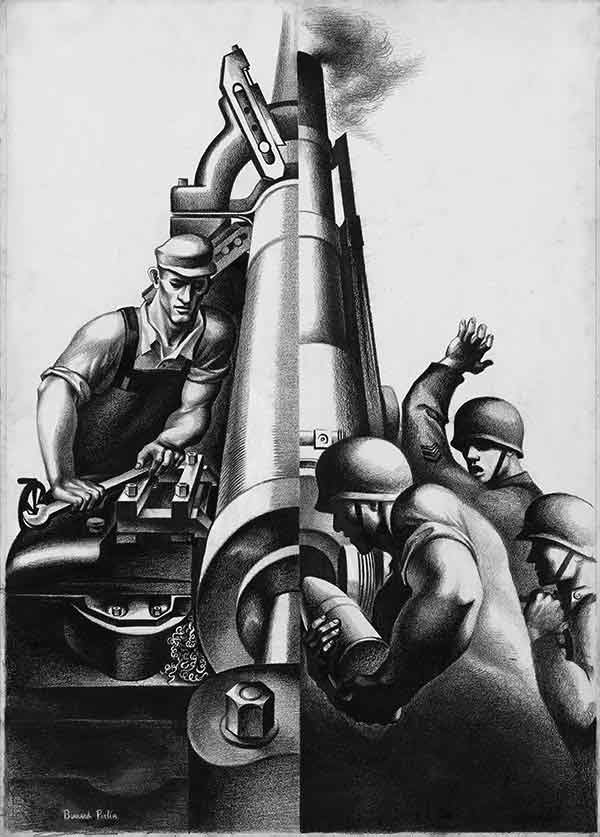
A 200-pound Parrott Rifle in Fort Gregg on Morris Island, South Carolina, 1865.
Photo: Samuel A. Cooley. US Army Signal Corps.
Fort Gregg - Morris Island, South Carolina.
National Archives and Records Administration.
Still Picture Branch; College Park, Maryland.
The incredible advances in manufacturing capabilities that had occurred up to the time of the Civil War made the widespread manufacturing of rifled cannon possible and there were several models of rifled cannon used during the American Civil War.

Interior view of the rifling inside a cannon.
Photo: Department of Defense. Department of the Navy. Naval Imaging Command.
National Archives and Records Administration.
Still Picture Branch; College Park, Maryland.
Rifling large guns requires very large machine shop equipment because the entire gun barrel must be mounted in a lathe. Before this time nearly all cannon were smooth bore guns. The rifling of cannon substantially increased the range and accuracy of this weapon. Rifling large guns during this conflict substantially increased machine shop capabilities and manufacturing prowess.

Two different images put together.
One image shows a machinist turning a cannon on a lathe and the other
shows artillery men putting a shell into the same gun somewhat later.
Poster Artist: Bernard Perlin.
Original Artwork for World War II Posters, 1942 - 1945.
Office for Emergency Management. Office of War Information.
Domestic Operations Branch. Bureau of Graphics and Printing.
National Archives and Records Administration.
Still Picture Branch; College Park, Maryland.